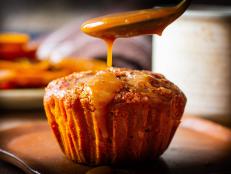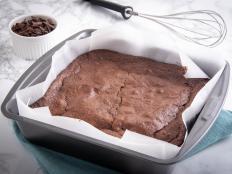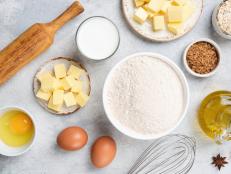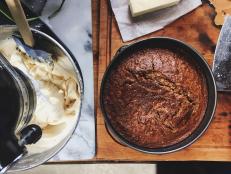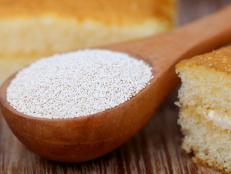Baking Measuring Do's and Don'ts
Turn out better baked goods by following these cardinal rules.
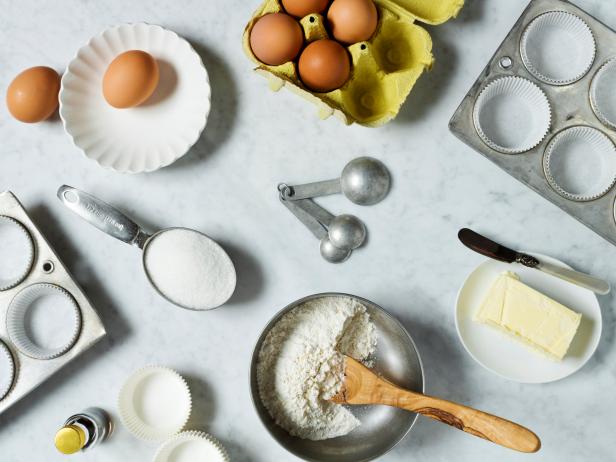
Accurately measured ingredients can often be the difference between perfect baked goods and not-so-perfect ones, so it’s key to read recipes carefully and measure ingredients properly. With these measuring do's and don'ts, you’re set to tackle any kind of bread, cake, cookie or pie your heart (or stomach) desires.
DO get yourself a set of proper measuring cups and spoons. Cups and teaspoons are standardized units of measurement that require specific tools — a regular cup or spoon won’t cut it.
DON'T use liquid measuring cups with dry ingredients. Though you can kind of get away with using dry measuring cups for liquids, it doesn’t work the other way around. Measuring spoons can be used for either dry or wet ingredients.
DO read and follow directions carefully. "1 cup sifted all-purpose flour" and "1 cup all-purpose flour, sifted" are not the same the thing. You sift the flour before measuring it in the former and after in the latter, which leads to different amounts of flour.
DON'T use your measuring cup to scoop out flour. We recommend you spoon it into the cup and then level it off instead.
DO pack brown sugar into measuring cups and spoons. Packing is the standard way brown sugar (but only brown sugar) is measured for all recipes.
DON'T tilt your utensils when measuring liquids. An un-level measuring cup can lead to error, so always set it on a flat surface to get an accurate reading.
DO read liquid measurements from the side. To get an accurate reading you must view from the side to see where the bottom of the meniscus (the curved shape at the top of liquids caused by surface tension) lands.
DON'T forget to coat your measuring cups and spoons with nonstick cooking spray before filling with sticky substances such as honey, agave or maple syrup. The spray will help them slide out with ease.
DO invest in a digital scale if you intend to do lots of baking. It is the most-accurate method of measuring ingredients. Be sure to zero out the scale after adding a bowl to hold your ingredients, and make sure your scale is set to either grams or ounces per the recipe.
DON'T confuse ounces with fluid ounces. The first is a measure of weight, and the second is a measure of volume (though for water — and other liquids of similar density — they are equivalent).
DO get to baking! Now that you're a measuring pro, all that's left is to grab some recipes and preheat your oven.
Baking Measuring Do's and Don'ts [Infographic]
Turn out better baked goods by following these cardinal rules.

























